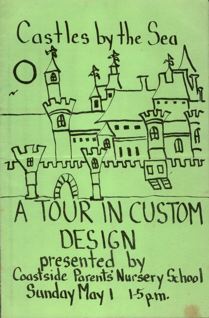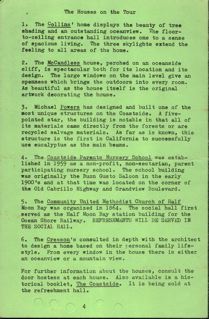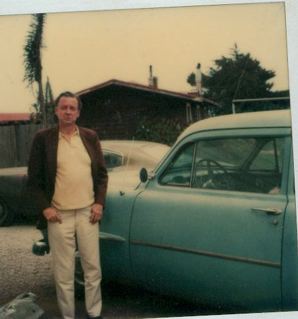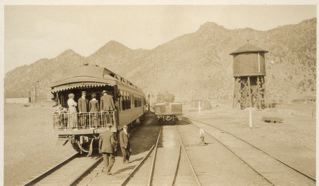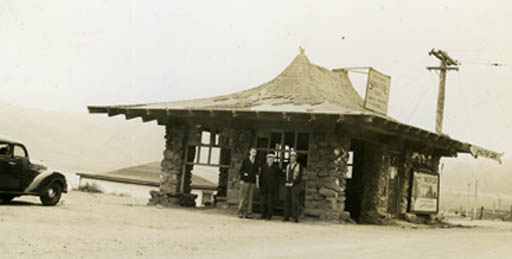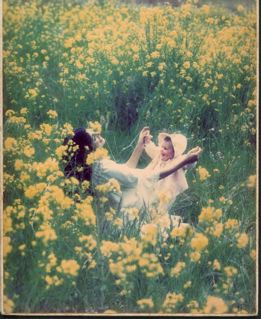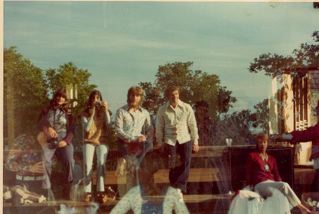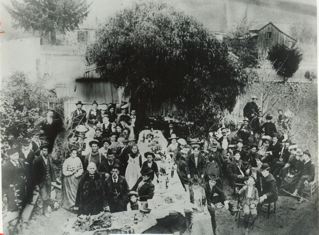“Notes from an El Granada Attic
From a sheaf of roughly typed yellowing pages–reportedly from an El Granada attic in the 1970’s.
The typist is not identified. The entries are undated.
Henry Dunn came by the house on Saturday and announced that Deane and Deane
was going to build a sewer plant for the Granada Sanitary District in exchange for half the permits. I don’t know if board watchers Viola Schuetrum and Clay Fountain had been present for the meeting, but I was pretty sure that news like this would be regarded as corruption and conspiracy by the left wing of the Granada constituency.
Walt Schuetrum, Viola’s husband, is now primarily a home gardener and an expert on the use of sewer sludge as fertilizer. (For example, did you know that only tomato seeds can survive the incineration that is used to purify sewer sludge, and when you use ss on your garden, you will get volunteer tomatoes from the seeds that have survived).Walt can tell you more.
Both Clay and Walt had been involved with labor and, judging from their politics and Clay’s gusto, probably both had sung the âInternationaleâ? in a large group of people on more than a few occasions.
Clay’s involvement with labor was deeper. He had actually worked, more or less directly, with Walter Reuther. I don’t know if he did PR, but he was in the branch of the organization that had to be literate. To Clay the labor movement was (a) glorious, but so were many other things. He had great enthusiasm for life, for friendship, for justice, for mildly leftist causes.
He always displayed his enthusiasm with a big smile, some body contact, and a little bit of saliva spray. He was a loveable guy, and soon, if not today, he would be the Paul Revere of the sewer wars to come.
The pressure on the GSD has gotten pretty heavy lately. Morris Bell and Knute Kleinen were feeling it severely the other night and decided that the ungrateful Granada public did not deserve them, so they resigned from the board. Now they want to come back but the citizens that are up in arms about Deane and Deane’s new development proposals have found a section of the Government Code that says they can’t come back. It looks like the whole thing is going to court.
It looks like Joe Murray and Dick Scholl are running for the GSD. All these recent development proposals have awakened this little community. Silk screened signs are popping up all over town. People are going door to door. The world’s smallest political machine is at work. The actors appear to be Joe Murray, Larry Pollard, Dick Scholl, Fred Lyon, and school board member John Wood.
Clay Fountain is a cheerleader and fellow traveler.
The Granada political machine has resorted to satire. To respond to Bill Deane’s weekly column in the Half Moon Bay review called “For The Record” complete with a thumbnail photograph of Bill Deane, these guys are writing a column of their own with exactly the same format. Their column is called “For the Birds” and its author is named Hill Clean. The picture at the top of the column of Mr. Clean is clearly the same guy that appears on the bottle of the cleaning liquid. He must live around here someplace.”
——————————————-
Although these events happened before I moved to El Granada, a little research reveals that developers Deane & Deane did not get the desired permits and shortly thereafter went out of business.
 Photo: Methodist Church
Photo: Methodist Church
